
Filter News
Area of Research
- (-) Energy Science (127)
- (-) Materials for Computing (15)
- Advanced Manufacturing (6)
- Biology and Environment (125)
- Biology and Soft Matter (1)
- Building Technologies (2)
- Computational Biology (1)
- Computational Engineering (3)
- Computer Science (8)
- Electricity and Smart Grid (1)
- Energy Frontier Research Centers (1)
- Energy Sciences (1)
- Functional Materials for Energy (1)
- Fusion and Fission (6)
- Fusion Energy (1)
- Isotopes (2)
- Materials (74)
- Mathematics (1)
- National Security (29)
- Neutron Science (29)
- Nuclear Science and Technology (2)
- Quantum information Science (2)
- Sensors and Controls (1)
- Supercomputing (88)
News Topics
- (-) Environment (54)
- (-) Machine Learning (7)
- (-) Mercury (3)
- (-) Microscopy (12)
- (-) Nanotechnology (14)
- (-) Security (7)
- (-) Summit (5)
- 3-D Printing/Advanced Manufacturing (81)
- Advanced Reactors (6)
- Artificial Intelligence (8)
- Big Data (5)
- Bioenergy (26)
- Biology (11)
- Biomedical (7)
- Biotechnology (4)
- Buildings (38)
- Chemical Sciences (18)
- Clean Water (8)
- Composites (17)
- Computer Science (30)
- Coronavirus (15)
- Critical Materials (9)
- Cybersecurity (8)
- Energy Storage (71)
- Exascale Computing (2)
- Fossil Energy (2)
- Frontier (2)
- Fusion (1)
- Grid (39)
- High-Performance Computing (6)
- Hydropower (3)
- Isotopes (2)
- Materials (43)
- Materials Science (38)
- Mathematics (2)
- Microelectronics (1)
- Molten Salt (1)
- National Security (6)
- Neutron Science (16)
- Nuclear Energy (7)
- Partnerships (12)
- Physics (1)
- Polymers (14)
- Quantum Computing (1)
- Quantum Science (5)
- Simulation (4)
- Space Exploration (4)
- Statistics (1)
- Transportation (68)
Media Contacts
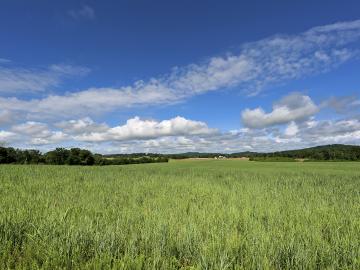
Nearly a billion acres of land in the United States is dedicated to agriculture, producing more than a trillion dollars of food products to feed the country and the world. Those same agricultural processes, however, also produced an estimated 700 million metric tons of carbon dioxide equivalent in 2018, according to the U.S. Department of Agriculture.
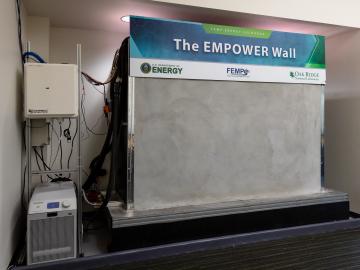
Oak Ridge National Laboratory researchers demonstrated that cooling cost savings could be achieved with a 3D printed concrete smart wall following a three-month field test.

Improved data, models and analyses from ORNL scientists and many other researchers in the latest global climate assessment report provide new levels of certainty about what the future holds for the planet

As the United States transitions to clean energy, the country has an ambitious goal: cut carbon dioxide emissions in half by the year 2030, if not before. One of the solutions to help meet this challenge is found at ORNL as part of the Better Plants Program.

Researchers at ORNL have developed a robotic disassembly system for spent electric vehicle battery packs to safely and efficiently recycle and reuse critical materials while reducing toxic waste.

A research team at Oak Ridge National Laboratory have 3D printed a thermal protection shield, or TPS, for a capsule that will launch with the Cygnus cargo spacecraft as part of the supply mission to the International Space Station.

Oak Ridge National Laboratory researchers have developed a new catalyst for converting ethanol into C3+ olefins – the chemical
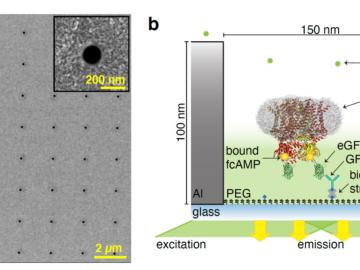
Researchers working with Oak Ridge National Laboratory developed a new method to observe how proteins, at the single-molecule level, bind with other molecules and more accurately pinpoint certain molecular behavior in complex
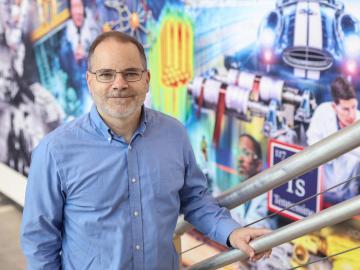
David Sholl is director of the new ORNL Transformational Decarbonization Initiative, working to elevate the lab’s prominence in decarbonization science and technology. Credit: Genevieve Martin, ORNL/U.S. Dept. of Energy.
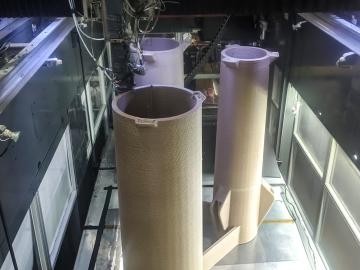
A team of researchers at Oak Ridge National Laboratory demonstrated the ability to additively manufacture power poles from bioderived and recycled materials, which could more quickly restore electricity after natural disasters.


